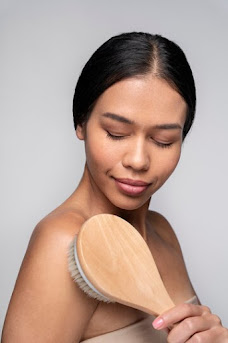Wellness Wows (Fish Spa)
Some Notable Facts About Fish Spa
 |
| Photo Credit: Pexels.com |
BY PRAMITA BOSE
Other Skin Regions
While fish spas are most commonly associated
with removing cuticles from the feet and
toes, other parts of the body can also be exposed to this treatment, especially in some advanced or
specialised fish spa services. For example, some salons offer fish spa remedies
for hands, elbows, knees and even the back. However, it’s essential to note
that the healing procedure for other body parts might vary and may require more
care due to the sensitivity of different skin areas.
Essential Aqua Elements
Bitten by the curiosity bug,
one wishes to know the ingredients mixed into the water of the basin, tank or an
aquarium for the fish therapy.
The water used in fish spas is generally kept
clean and filtered. It may not contain any extra components or substances
unless specified for therapeutic purposes (like the essential oils). The water
is changed regularly or strained and purified between each session to retain
hygiene while the temperature is typically maintained at a comfortable 28°C to
30°C (82°F to 86°F). This temperature range ensures comfortable survival of the
fishes while also being ideal for the human skin.
Precautions
If a customer complains of
discomfort or encounters skin allergies during or post fish pedicure session, a
slew of necessary measures can immediately be taken by a spa centre to tackle
the prevalent exigency.
If a customer experiences discomposure or
skin irritation, the following can be implemented:
●Instant
removal: The client enduring problems should be asked to remove his/her
feet from the tank to stop any further contact with the fishes.
●Rinse and
soothe: The affected area must be rinsed well with clean, cool
water and antibiotic creams should be applied.
● Consultation: If the
reaction is severe and continues unabated, the spa should recommend visiting a
doctor or a dermatologist for further evaluation.
Distress Hour
Most parlours or salons do not keep a medical
specialist on standby during a fish spa session as these treatments are
generally considered safe but the fact is, there is a dearth of sufficient
studies and trials to support this practice. Another cause for worry is the
inadequate training of the staff to deal with similar emergencies on an urgent
basis as the first responders.
Toothless
Bite
The Garra rufa fish does not have a sharp set of teeth. Instead, it uses its small, toothless mouths to gently nibble on and extract the dead skin cells. It is attracted to the dead skin rather than feeding on living skin. The fish does not harm the skin as it only targets the dead skin layer and isn’t capable of drawing blood either. This fish is exclusively used for skin spas because its nibbling action helps exfoliate the skin naturally, thus providing a gentle yet effective treatment.
Duration
A typical fish spa session lasts 20 to 30
minutes. This timeframe allows the fish enough time to work on exfoliating the
dead skin without causing uneasiness to the client.
Pocket Pinch
The cost of a fish spa treatment can largely vary
depending on the location, the size of the session and provision of a package
of add-on services. On average, a fish pedicure or a foot spa session can range
from Rs. 1,000 to Rs 1,500.
*********************************************************************************



Comments
Post a Comment